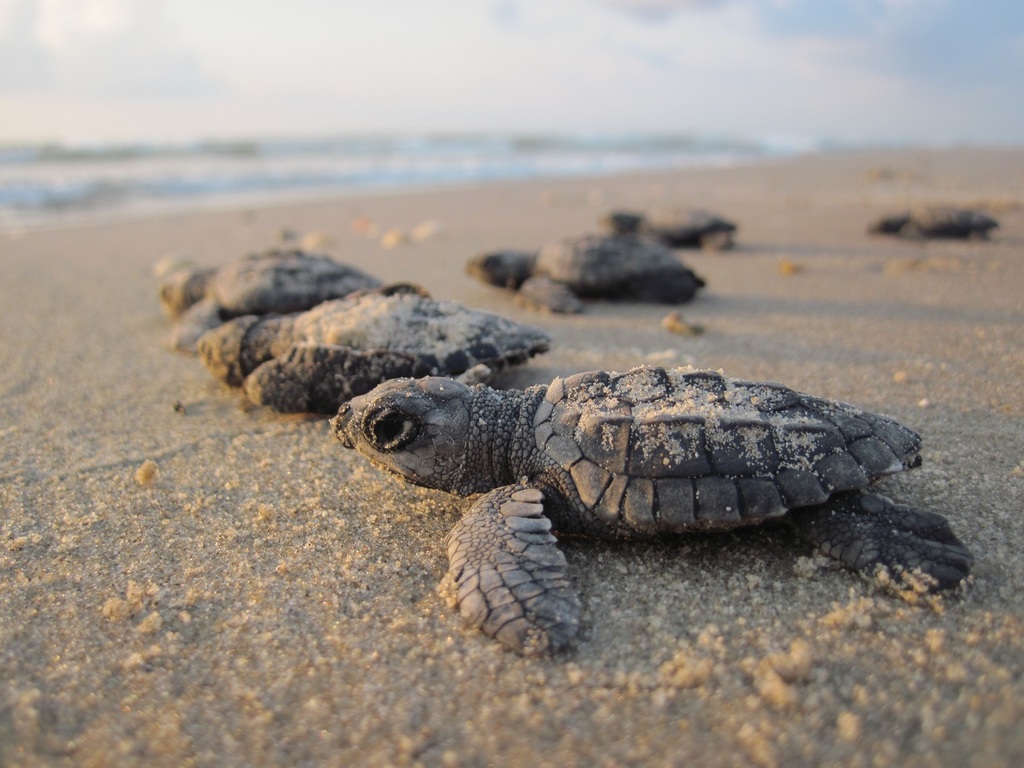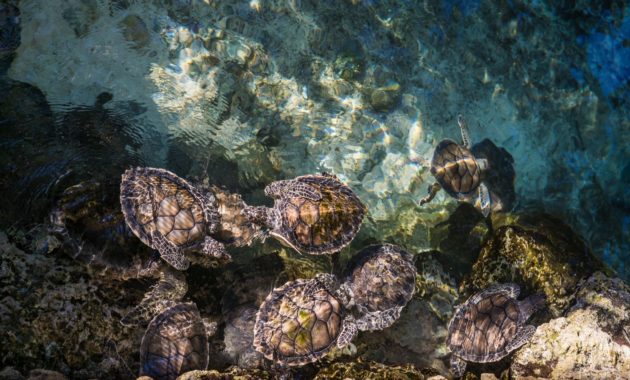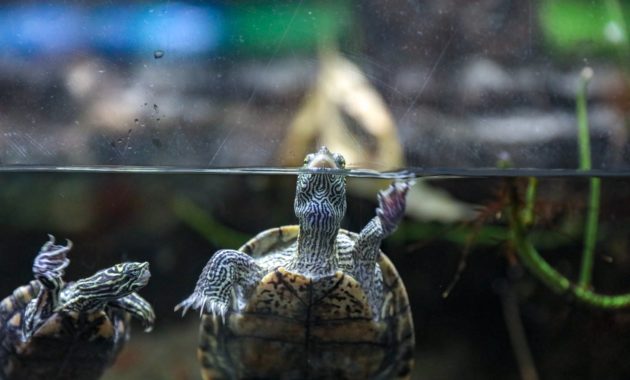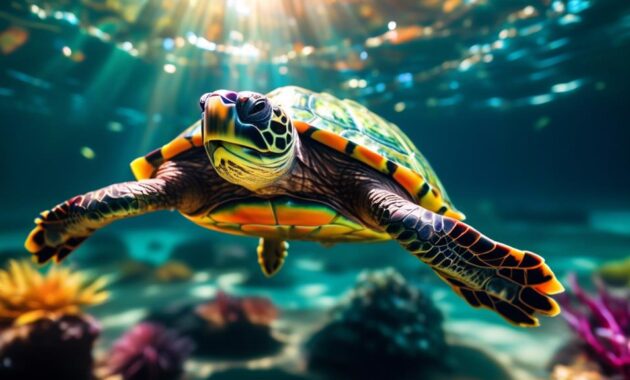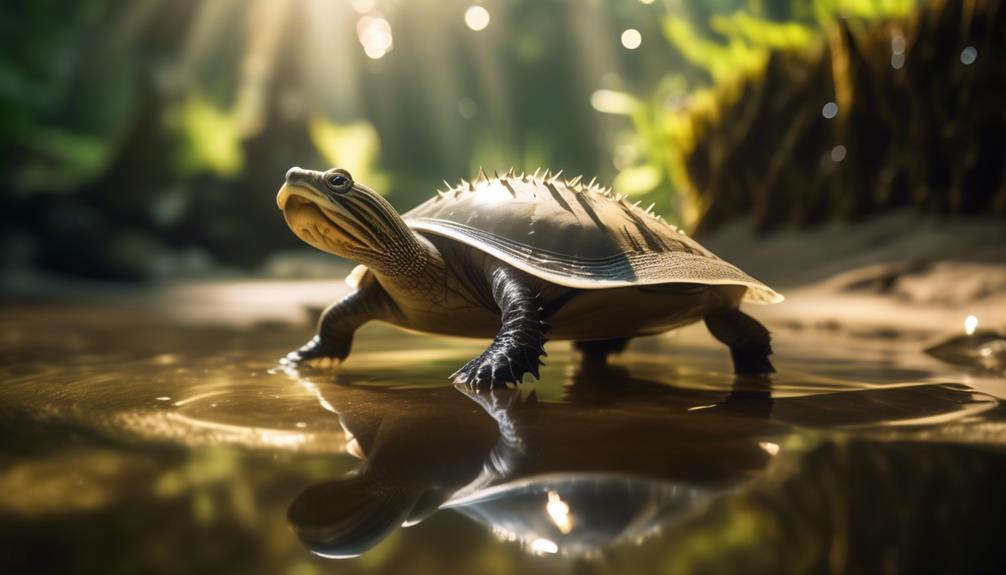
Dive into the depths of discovery and unravel the mysteries surrounding the enigmatic Spiny Softshell Turtle, North America’s aquatic marvel. With its unique blend of physical characteristics and captivating behaviors, this remarkable species has piqued the interest of scientists and nature enthusiasts alike.
But, the true allure lies in its elusive nature, as it carefully navigates the aquatic landscapes, leaving us yearning to uncover its secrets. So, strap on your scuba gear and prepare for an underwater adventure like no other, as we delve into the hidden world of the Spiny Softshell Turtle.
Key Takeaways
- The spiny softshell turtle is a small to medium-sized aquatic turtle found in North America, with a unique leathery, round, and flat shell.
- They have a lifespan of up to 50 years and are high-maintenance pets, suitable for experienced turtle keepers.
- Their diet consists of pelleted commercial food, crustaceans, fish, insects, mollusks, tadpoles, and worms.
- Conservation efforts are focused on protecting nesting areas, mitigating road mortality, and promoting responsible turtle conservation practices.
Size and Lifespan
The Spiny Softshell Turtle is a small to medium-sized turtle with a length ranging from 5 to 19 inches and can live up to 50 years. This makes them a fascinating species to study and observe.
Their size allows them to adapt to various aquatic environments, from small ponds to large rivers. With their long lifespan, they’ve the potential to witness significant changes in their habitat over time.
It’s important to note that their size and lifespan can vary depending on factors such as diet, habitat quality, and genetic factors. Therefore, it’s crucial to provide them with appropriate care and suitable living conditions to ensure their well-being and longevity.
Type, Diet, and Comparable Breeds
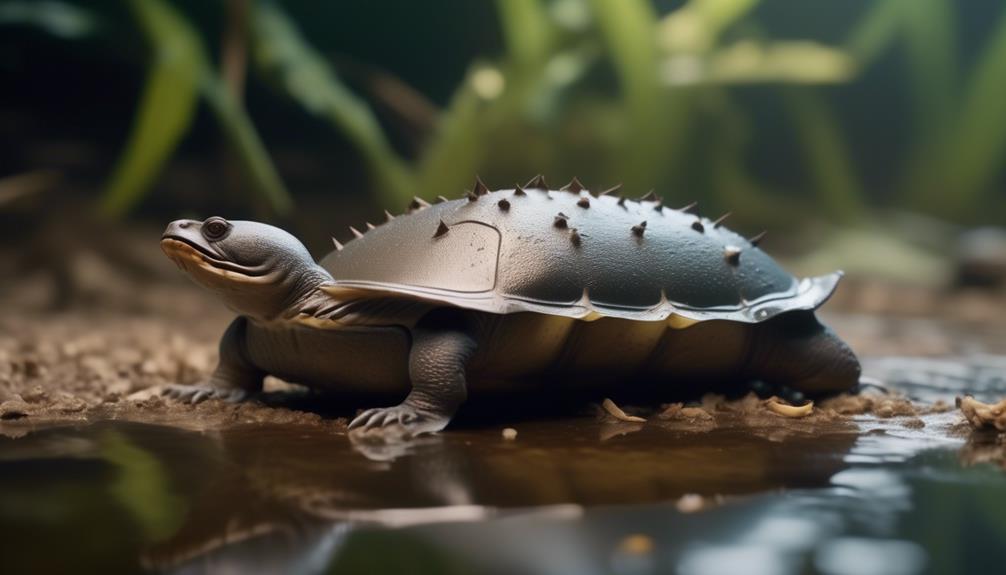
If you’re considering getting a Spiny Softshell Turtle or exploring different breeds of aquatic turtles, understanding their type, diet, and comparable breeds is essential. Here are some key points to know:
- Type: Spiny Softshell Turtles are aquatic turtles that thrive in freshwater habitats. They’ve a unique shell that’s leathery, round, and flat, with small spines on the front edge. They also have a tubular snout and webbed feet with three claws.
- Diet: These turtles have a diverse diet, including pelleted commercial diet, crustaceans, fish, insects, mollusks, tadpoles, and worms. They require a high maintenance diet to ensure their nutritional needs are met.
- Comparable Breed: The Smooth Softshell Turtle is a breed that’s similar to the Spiny Softshell Turtle. Both breeds have similar habitat preferences and dietary requirements.
- Suitable for Experienced Keepers: Spiny Softshell Turtles are suitable for experienced turtle keepers due to their specific needs and high maintenance requirements. Proper care, habitat setup, and diet management are crucial to their well-being.
Native Habitat and Behavior
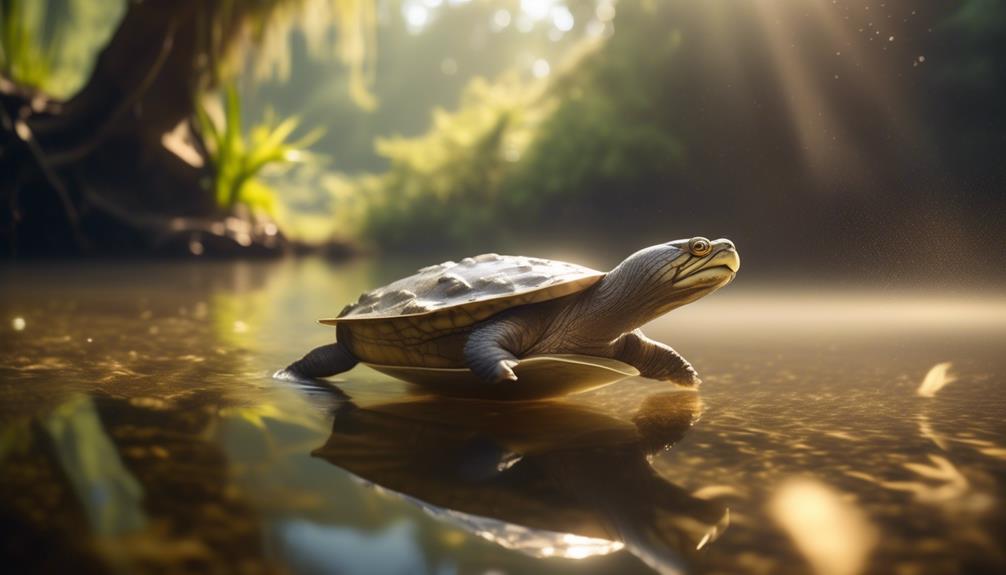
Now let’s take a closer look at the native habitat and behavior of the Spiny Softshell Turtle, a fascinating aquatic species that requires specialized care.
Found in North America, including parts of Canada and the United States, these turtles bury themselves in shallow or deep water and bask on rocks or logs. During winter, they hibernate in well-oxygenated water.
They prefer freshwater habitats with soft bottoms, aquatic vegetation, and areas for nesting and basking. Spiny Softshell Turtles can be found in rivers, lakes, and ponds throughout North America, and they often prefer areas with sandy or muddy bottoms. They’re also capable of tolerating brackish water and occasionally venture into saltwater.
These turtles can be found in both urban and rural areas, making them adaptable to various environments.
Description and Colors
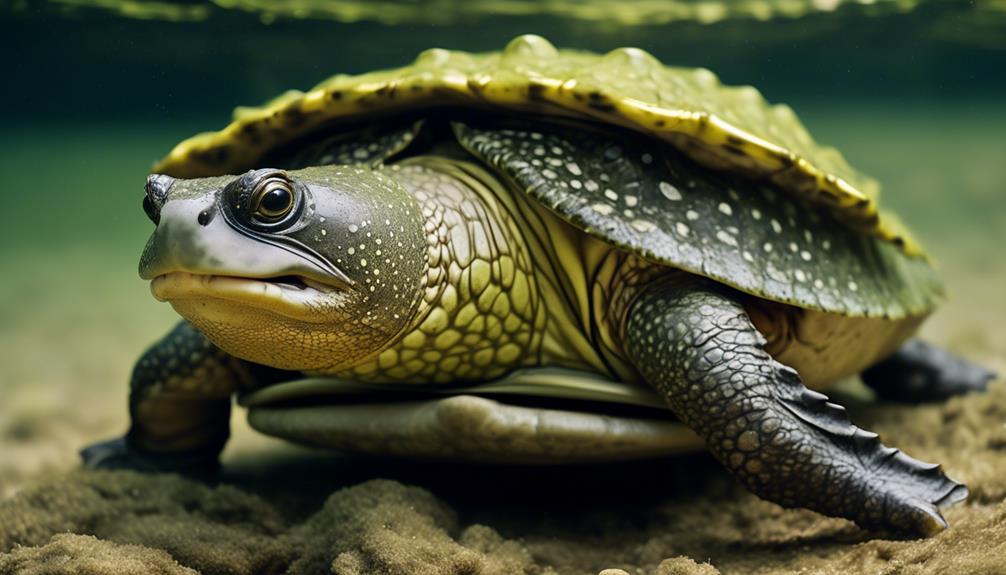
When describing the Spiny Softshell Turtle, one can’t help but be captivated by its unique shell and vibrant colors. This fascinating creature showcases a distinctive set of characteristics that make it truly remarkable:
- Unique shell: The Spiny Softshell Turtle has a leathery, round, and flat shell, which sets it apart from other turtle species. The shell is adorned with small spines on the front edge, giving it a distinctive appearance. Its texture is similar to sandpaper, adding to its uniqueness.
- Tubular snout and large nostrils: The Spiny Softshell Turtle possesses a long, tubular snout that aids in its ability to breathe while submerged in water. Its large nostrils allow for efficient respiration.
- Webbed feet with three claws: This aquatic marvel has webbed feet equipped with three claws, enabling it to swim with agility and maneuver through water effortlessly.
- Vibrant colors: The Spiny Softshell Turtle exhibits a stunning array of colors. Its carapace can range from yellow-brown to olive, adorned with dark blotches or black spots. The limbs and head are typically gray to olive with dark spots, while the plastron is usually yellow or white. These vibrant colors make the Spiny Softshell Turtle a visual delight to behold.
Native Habitat, Physical Characteristics, Diet, Reproduction, and Conservation
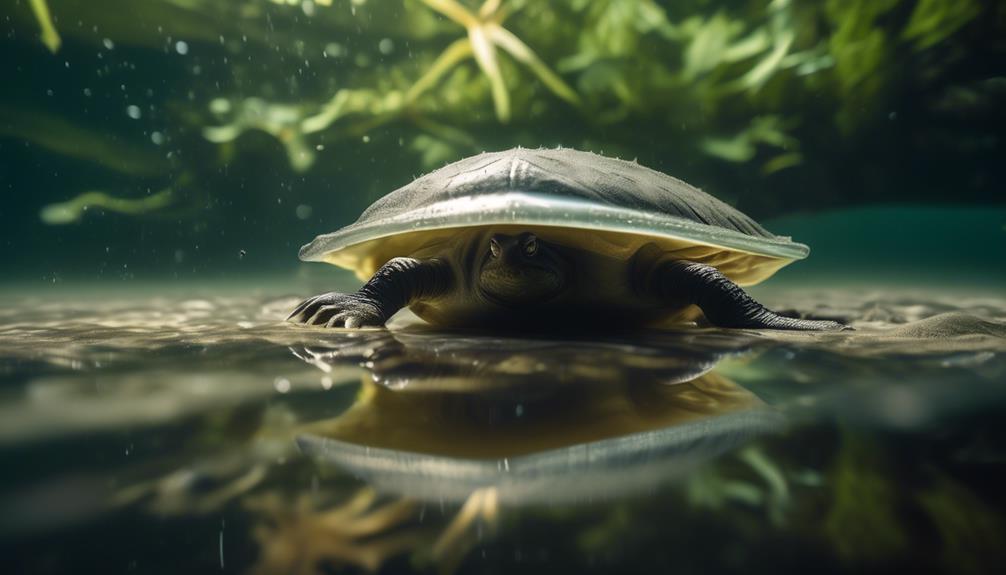
The Spiny Softshell Turtle thrives in a diverse range of North American habitats, while exhibiting distinct physical characteristics, dietary preferences, reproductive behaviors, and conservation needs. Found in rivers, lakes, and ponds throughout North America, this turtle prefers areas with sandy or muddy bottoms and can tolerate brackish water. It can often be found basking on logs or rocks near the water’s edge, and is adaptable to both urban and rural environments. The Spiny Softshell Turtle has a flat, pancake-like shell with a leathery texture that can grow up to 17 inches in length. It has a long, pointed snout and webbed feet for efficient swimming. Primarily carnivorous, it feeds on aquatic insects, crustaceans, and small fish, but will also consume plants and algae on occasion. Females lay their eggs in sandy or gravelly areas near the water, with a clutch size ranging from 4 to 28 eggs. The hatchlings emerge in late summer or early fall, and sexual maturity is reached at around 4 to 7 years of age. While the Spiny Softshell Turtle is listed as a species of least concern by the IUCN, certain populations have declined due to habitat loss, pollution, and road mortality. Conservation efforts focus on protecting nesting areas, implementing road mitigation measures, and promoting responsible turtle conservation practices through public education and awareness campaigns.
| Native Habitat | Physical Characteristics | Diet | Reproduction |
|---|---|---|---|
| Found in rivers, lakes, and ponds throughout North America | Flat, pancake-like shell with a leathery texture | Primarily carnivorous, feeding on aquatic insects, crustaceans, and small fish | Females lay eggs in sandy or gravelly areas near the water |
| Prefers areas with sandy or muddy bottoms | Shell can grow up to 17 inches in length | Will also consume plants and algae on occasion | Clutch size can range from 4 to 28 eggs |
| Can tolerate brackish water and occasionally venture into saltwater | Long, pointed snout and a streamlined body | Incubation period lasts around 60 to 90 days | |
| Often found basking on logs or rocks near the water’s edge | Webbed feet for efficient swimming | Hatchlings emerge in late summer or early fall |
Found in Rivers, Lakes, and Ponds Throughout North America
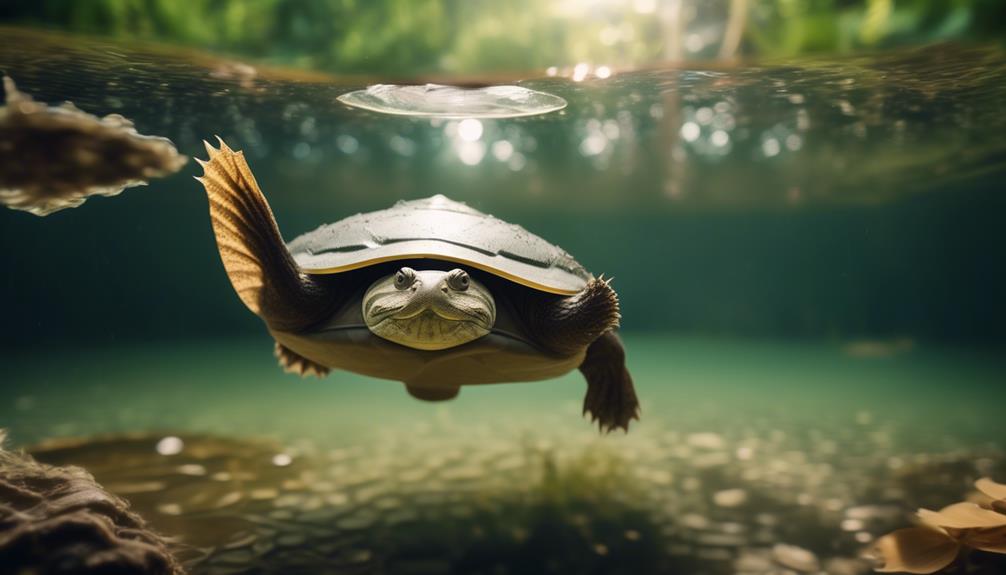
As we explore further, let’s dive into the fascinating world of the Spiny Softshell Turtle and its presence in the rivers, lakes, and ponds throughout North America.
- The Spiny Softshell Turtle can be found in a variety of freshwater habitats, including rivers, lakes, and ponds.
- It’s a versatile species that can adapt to both urban and rural environments.
- These turtles prefer areas with sandy or muddy bottoms, as well as soft vegetation and nesting and basking spots.
- They can tolerate brackish water and occasionally venture into saltwater.
The Spiny Softshell Turtle’s ability to thrive in a range of aquatic environments is a testament to its resilience and adaptability. Whether in a bustling city or a remote wilderness, these turtles have found a way to coexist with their surroundings.
Keep reading to discover more about this incredible creature and its remarkable features.
Flat, Pancake-Like Shell With a Leathery Texture
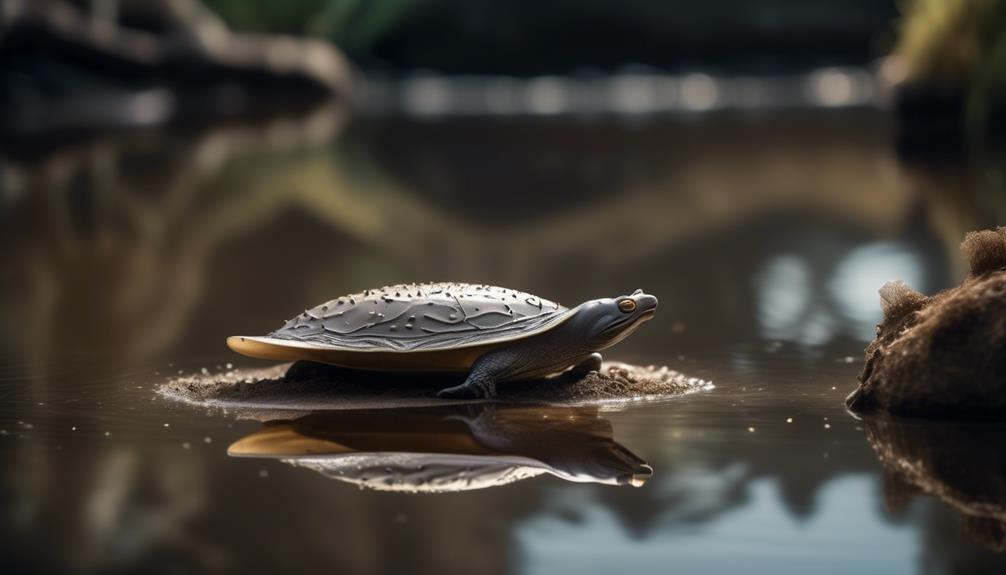
With its unique physical characteristics, the Spiny Softshell Turtle boasts a flat, pancake-like shell that has a leathery texture. This shell sets it apart from other turtle species and provides several advantages in its aquatic environment.
The flat shape allows the turtle to move quickly and efficiently through the water, reducing drag and making it an adept swimmer. The leathery texture of the shell provides protection against predators and helps the turtle camouflage in its surroundings.
The shell can grow up to 17 inches in length, and females tend to have a rounder shell compared to males. This remarkable adaptation of the Spiny Softshell Turtle’s shell contributes to its survival and success in North America’s rivers, lakes, and ponds.
Females Lay Eggs in Sandy or Gravelly Areas Near the Water
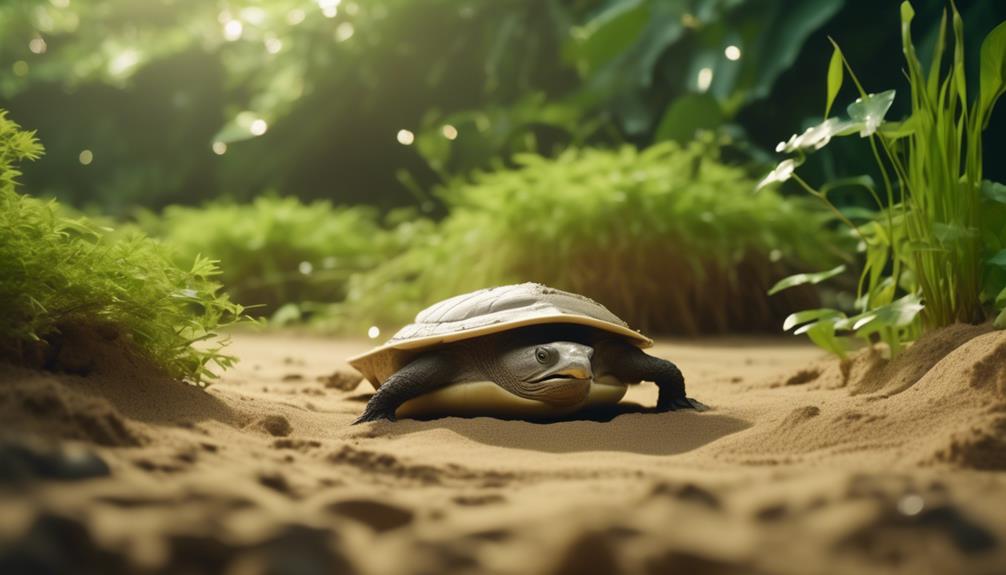
To ensure the survival of their offspring, female Spiny Softshell Turtles carefully select sandy or gravelly areas near the water to lay their eggs. This strategic choice of nesting sites offers several advantages:
- Adequate moisture: The sandy or gravelly areas provide the necessary moisture for the eggs to develop and hatch successfully.
- Temperature regulation: The sand or gravel helps regulate the temperature of the eggs, ensuring optimal conditions for incubation.
- Camouflage: The color and texture of the sandy or gravelly surroundings allow the eggs to blend in and remain hidden from potential predators.
- Accessibility to water: By nesting near the water, the hatchlings can easily make their way back to their aquatic habitat once they emerge.
Conservation Efforts and Threats
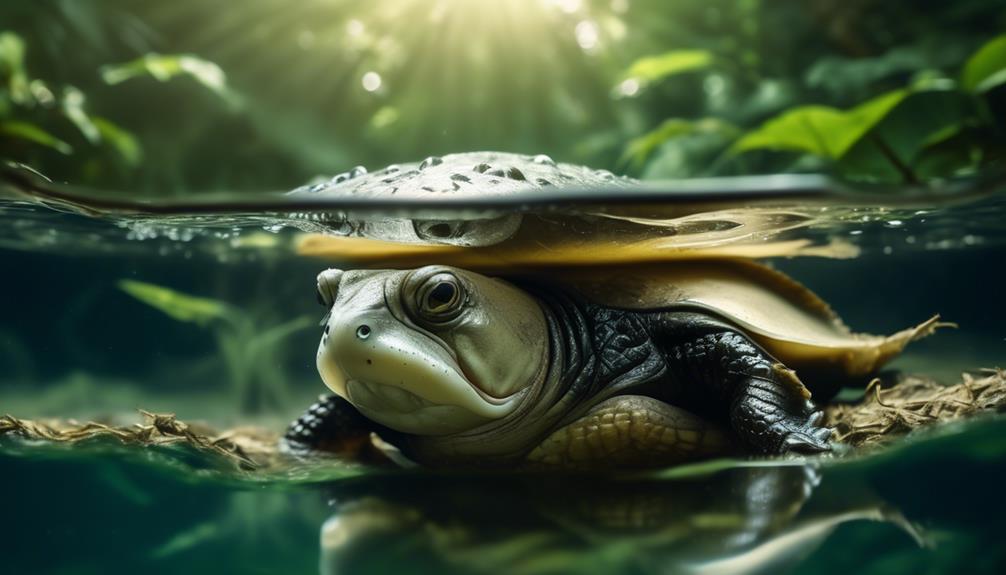
Conservation efforts for the Spiny Softshell Turtle focus on protecting nesting areas and implementing measures to mitigate the threat of road mortality. These turtles face significant challenges due to habitat loss and pollution. To address these issues, various initiatives have been undertaken. One important conservation strategy is the establishment of protected areas where nesting sites are safeguarded. Additionally, road mitigation measures such as constructing barriers and installing warning signs are being implemented to reduce the number of turtles killed while crossing roads. Public education and awareness campaigns are also crucial in promoting responsible turtle conservation practices. By engaging communities and raising awareness about the importance of protecting these unique creatures, we can work towards ensuring the long-term survival of the Spiny Softshell Turtle.
| Conservation Efforts | Threats |
|---|---|
| Protecting nesting areas | Habitat loss |
| Implementing road mitigation measures | Pollution |
| Establishing protected areas | Road mortality |
| Public education and awareness campaigns | |
| Engaging communities |
Frequently Asked Questions
How Fast Can the Elusive Spiny Softshell Turtle Swim?
The elusive spiny softshell turtle is a fast swimmer. It can move through the water quickly, using its streamlined body and webbed feet.
What Are the Main Threats to the Elusive Spiny Softshell Turtle Population?
The main threats to the elusive spiny softshell turtle population are habitat loss, pollution, and road mortality. These factors have led to population declines in some areas, making conservation efforts crucial for their survival.
How Do Elusive Spiny Softshell Turtles Defend Themselves From Predators?
Elusive Spiny Softshell Turtles defend themselves from predators by using their unique shell, which has small spines on the front edge, and their ability to bury themselves in shallow or deep water.
What Is the Average Size of a Clutch of Eggs Laid by Female Elusive Spiny Softshell Turtles?
The average size of a clutch of eggs laid by female elusive spiny softshell turtles is around 4 to 28 eggs. These eggs are usually laid in sandy or gravelly areas near the water.
Are Elusive Spiny Softshell Turtles Commonly Kept as Pets?
No, elusive spiny softshell turtles are not commonly kept as pets. They require high maintenance and are more suitable for experienced turtle keepers. They are a marvel of North America’s aquatic world.
What Makes the Spiny Softshell Turtle Unique Compared to the Chinese Stripe Necked Turtle?
The spiny softshell turtle is known for its flat, leathery shell and long snout, while the rare Chinese stripe-necked turtle stands out with its unique black and yellow striped neck. Both turtles have distinct physical traits and habitats, making each species special in its own way.
Conclusion
So, there you have it – the elusive Spiny Softshell Turtle, a true marvel of the aquatic world. With its unique physical characteristics, varied diet, and preference for freshwater habitats, this turtle is truly fascinating.
From its flat, pancake-like shell to its tubular snout and webbed feet, it’s a sight to behold. But, with its population facing threats, conservation efforts are crucial.
Let’s continue to protect and appreciate this remarkable species for generations to come.

